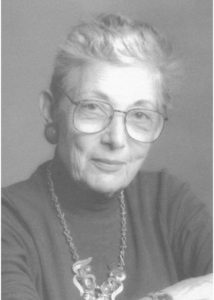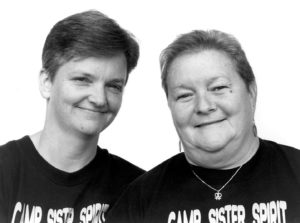

Women of Achievement
2003
DETERMINATION
for a woman who solved a glaring problem despite
widespread inertia, apathy or ignorance around her:
Mars Child, Harriet McFadden, and Polly Glotzbach
Never underestimate the power of women, especially when their target is something for their children. Such is the legacy of Mars Child, Harriet McFadden and Polly Glotzbach.
These three women were determined to build a place just for children, where youngsters could expand their imagination and knowledge in an atmosphere of joy. They created the Children’s Museum of Memphis, which for 13 years has enriched the lives of children and those who love them across the city and the region.
Mars Child grew up in Boston, attended Harvard, and worked for a foreign film distributor, New York’s public radio and television station, and as Mayor Ed Koch’s gubernatorial campaign press assistant. She loved the idea of the children’s museum of her childhood and, after moving to Memphis in 1984, wanted to see it translated here for her three children to enjoy.
At virtually the same time, native Memphian and Hollins College graduate Harriet McFadden read about the Boston museum in an in-flight magazine. She promptly flew north to see the museum for herself and plan one similar for Memphis. It was there that a Boston museum trustee told Harriet about Mars’s interest in the same idea and that Mars was in Memphis. Was it fate? Coincidence? Magic?
Harriet called Mars, who lived only a few blocks from her. It was the fall of 1985. They met and went to work, at first two or three times a week, balancing young children and other responsibilities, in the days before cell phones and e-mail. “We formulated a plan,” Harriet said. “We had to explain what a children’s museum was – an educational, interactive resource for children … and plan how we would sell it to people who didn’t know what one was but would possibly help us get started, like corporations and foundations.”
When they were ready to get serious about fundraising, many people told them to see Polly Glotzbach, who had just completed a term as president of the Junior League of Memphis. A Vanderbilt graduate, Polly lived within a few blocks of Mars and Harriet. She had toured the St. Louis Children’s Museum. “It came home to me,” Polly said, “how great it would be to have a children’s museum here, plus how fun it would be to be in on something in the early stages.”
In April 1987, they incorporated the Children’s Museum of Memphis. That July they hired a children’s museum consultant.
“People told me in meetings where we were trying to get money that our enthusiasm was infectious,” Harriet said. “We were determined.” Gradually their troop of believers grew, from a few women around a kitchen table to a large group of people.
Said Polly, “Initially, I felt we were pushing a rock up a hill and could stop when we wanted to but it took on such momentum we were soon racing after it.”






